AstrHori 25mm F2.8 2-5x Macro Review
Dustin Abbott
February 1st, 2024

Macro lenses are, by definition, specialist tools. They are designed for a specific type of photography, though some macro lenses double as being nice portrait or general purpose lenses, depending on their focal lengths. Many macro lenses are best suited for a single purpose, however: close up photography. That’s particularly true for the newest lens from AstrHori – the 25mm F2.8 2-5x Macro lens. Forget 1:1 macro, this lens is designed for ultra macro work, from 2:1 to even 5:1 performance. That is extreme levels of magnification!
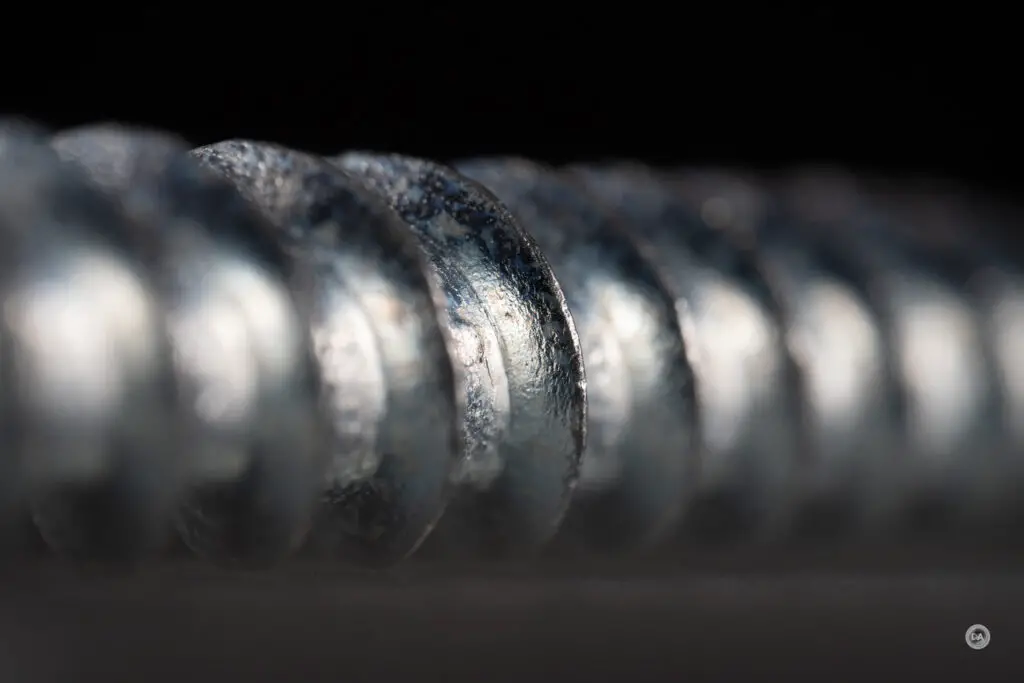
That is the threads from a small screw, which gives you a bit of an idea of both how high the levels of magnification are and also how tiny the depth of field will be with such a lens. Sound interesting? You can watch my video review to get the full picture…or just read on.
Follow Me @ YouTube | Patreon | Instagram | Facebook | DA Merchandise | Flickr | 500px | X
Thanks to AstrHori for sending me a review sample of this lens. As always, this is a completely independent review. *The tests and most of the photos that I share as a part of my review cycle have been done with the Sony a7RV along with the Sony Alpha 1 that serve as my benchmark cameras for Sony lenses.
__________________________________________________________________________________________________
Specialist tools come with specialist costs, and while the AstrHori 25mm F2.8 2-5x Macro is financially inexpensive at $249, the reality of the lens and its design comes with some unique challenges in using it. Getting great images with a lens like this requires good technique, patience, and sometimes an explanation of just what people are looking at (in this case the threads of an adjustable wrench):
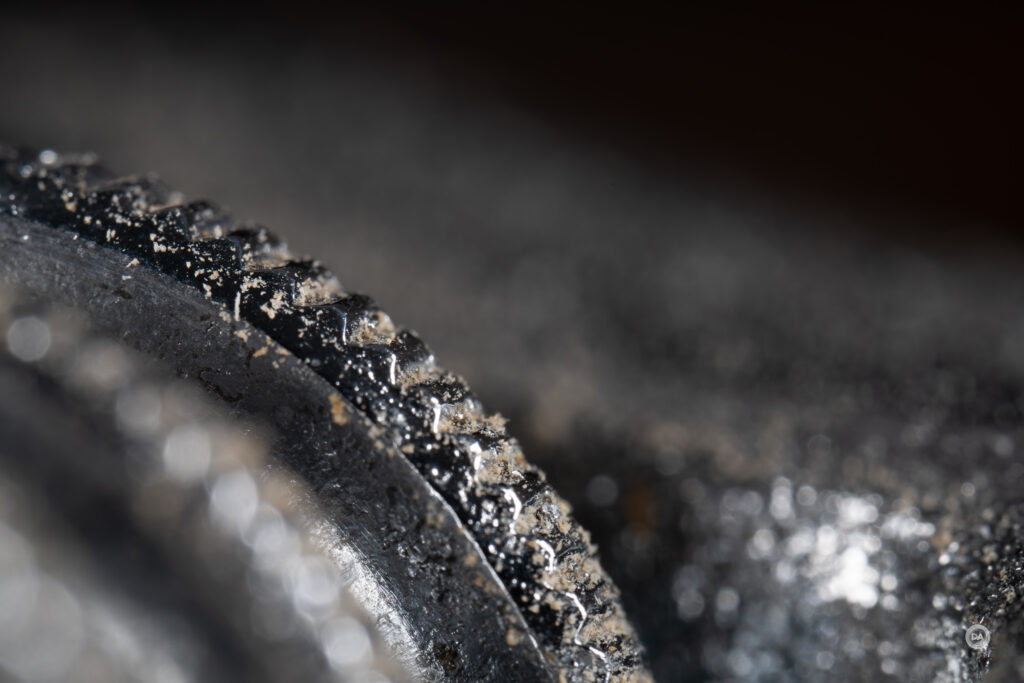
So let’s jump into the realities of this very unique lens together.
Build and Handling
The AstrHori 25mm F2.8 2-5x Macro has an atypical shape that looks more like a long tube rather than a typical camera lens. It most strongly resembles the Laowa 25mm F2.8 2.5-5x Ultra Macro, as they are very similar lenses with identical purpose. The lens is only 61mm in diameter, but much longer in length.
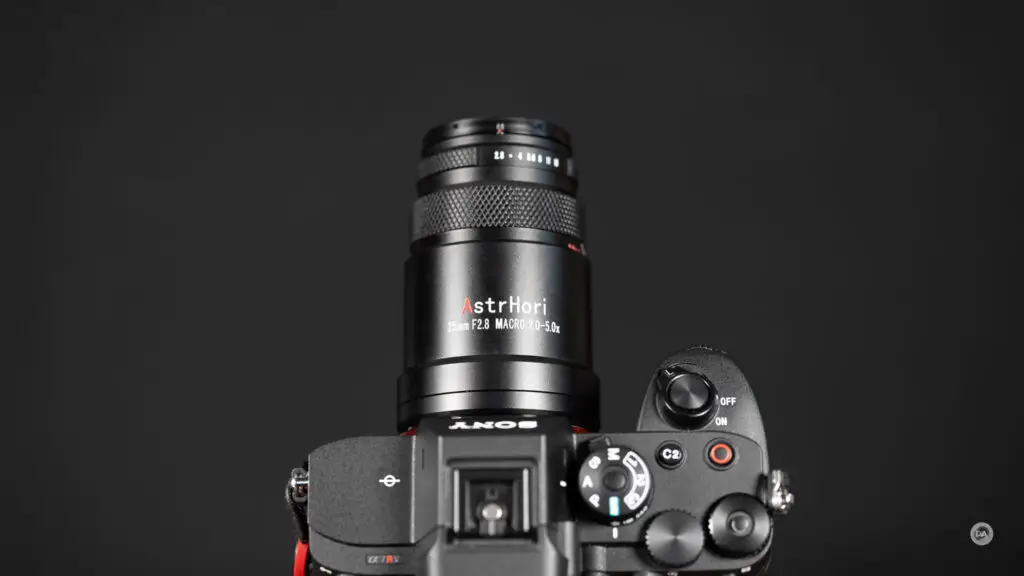
That shape becomes even more elongated when you focus to the 5:1 macro level, as the lens’ length extends from roughly 95mm in length (3.74″) to roughly 174mm (6.5″) by my measurements.
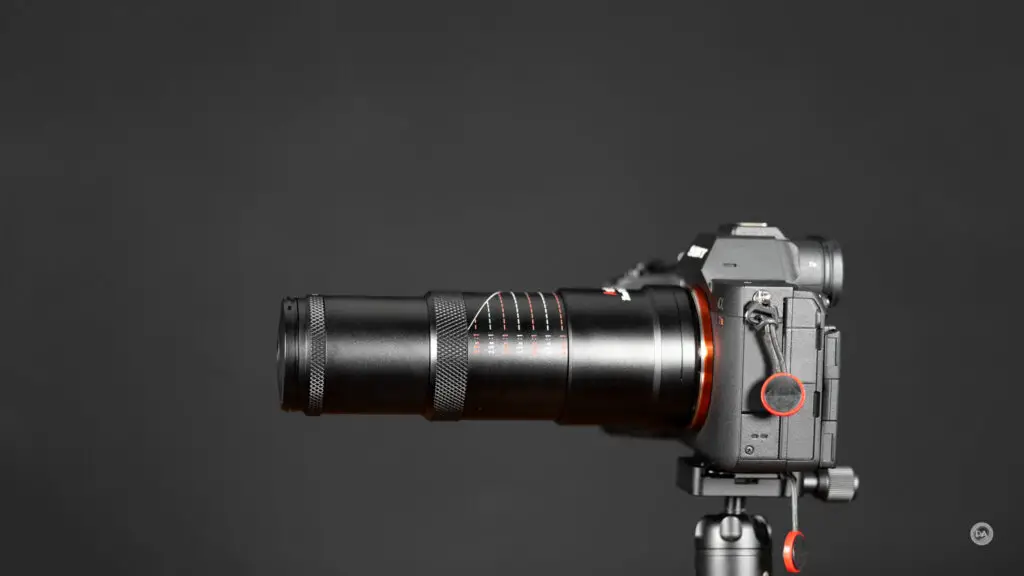
The lens construction is all of metal and glass, and the lens weighs in at 474g or 16.71oz. The lens feels substantial in the hand and dense when fully retracted, which makes sense when you consider the lens nearly doubles in length when fully focused into the 5x macro range.
The AstrHori 25mm F2.8 2-5x Macro is available for Sony E (tested here), Nikon Z, Canon RF, Leica L, and Fuji X-mounts. It is a full frame lens but obviously can be used on APS-C camera like Fuji’s X-mount cameras where it will have a 37.5mm full frame equivalent angle of view.
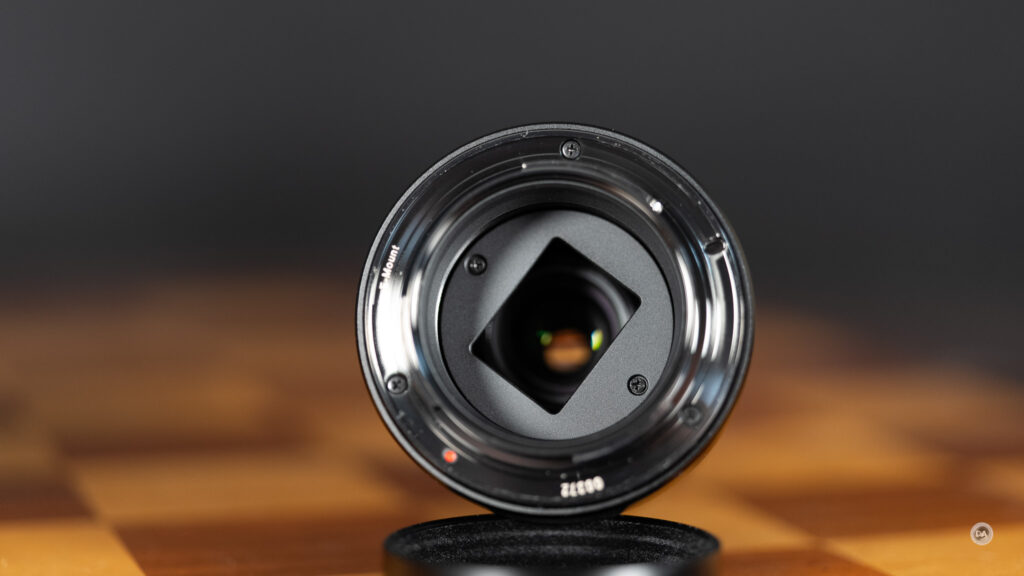
There are no electronic contacts; this is a fully manual lens. If you are unfamiliar with how such lenses operate, you’ll need to enable a few simple settings on your camera (I produced a video covering this which you can see here). Certain information will not report to the camera (like focal length and aperture), though some settings (like shutter speed and ISO) are generated by the camera and will show up in the EXIF settings of your images). If your camera has IBIS, you will need to manually input the focal length. Metering typically will work fine, as the camera determines that.
The lens has two rings on it. The ring closest to the front of the lens is the aperture ring. It is a clicked aperture with detents at each full stop, from F2.8-F16.
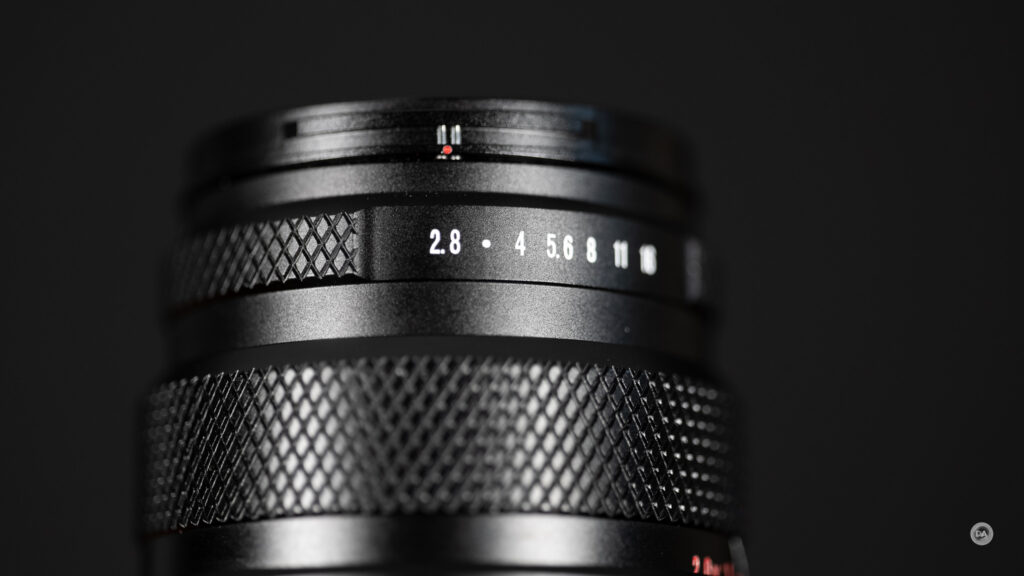
The aperture iris looks to have 8 straight blades, so you will see a bit of an octagonal shape to some bokeh highlights when stopped down.
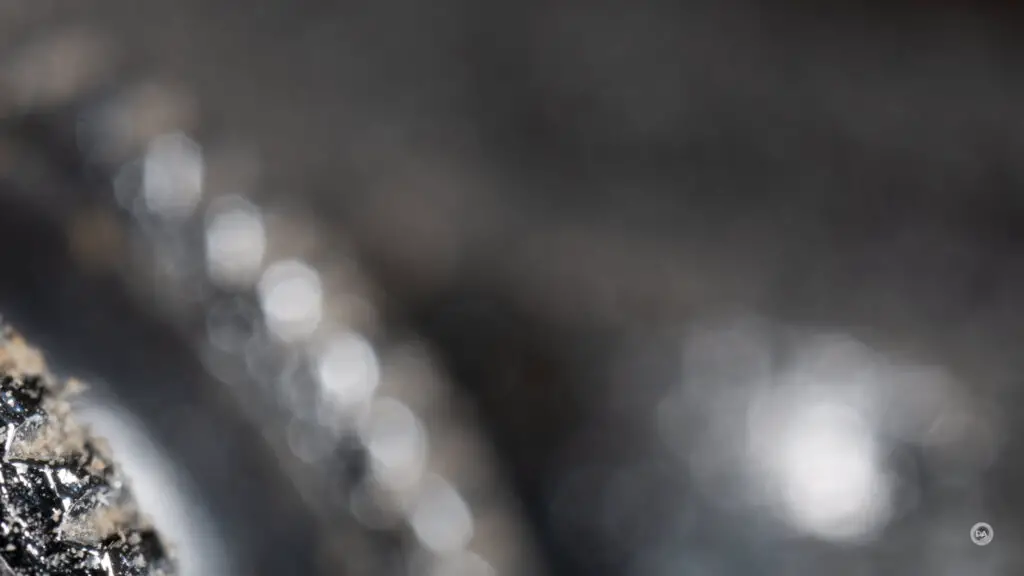
Understand that aperture becomes complicated when working at macro distances (this article will give you a bit of a primer), so while you can physically control the size of the aperture by using the aperture ring, the physics change the effective aperture at macro distances. You can set F4 on the aperture ring, for example, and at 2:1 that aperture will behave like F12 (roughly). Go to 5:1 magnification and that aperture now behaves like F24 (roughly). If that seems unnecessarily complicated to you, just know that you are going to need a lot of light on your subject when working at extreme macro settings because less and less light reaches the sense as you increase magnification. Most of thee shots in this review have had very bright lights on the subjects, and I still often have very low shutter speeds. This is a lens that will require a steady tripod; doing handheld macro at 2-5x is nearly impossible.
The second ring is the “focus” ring, though it really functions more like a macro-zoom ring. The AstrHori 25mm F2.8 2-5x Macro is a fixed focus lens; you can only focus at the minimum focus distance. That means your images will all be at least 2x macro, as you cannot focus to non-macro distances. No portraits, no infinity focus, not even lesser macro magnifications. As you “focus” the barrel is extending to increase the magnification level, not change focus.

You will always be working at a very close focus distance that varies from about 2 inches (5cm) at 2x Macro levels to a little over 1 1/2″ (4cm) at 5x macro magnification. Here’s the required working distance at 5x macro (first photo) and 2x macro (second photo)
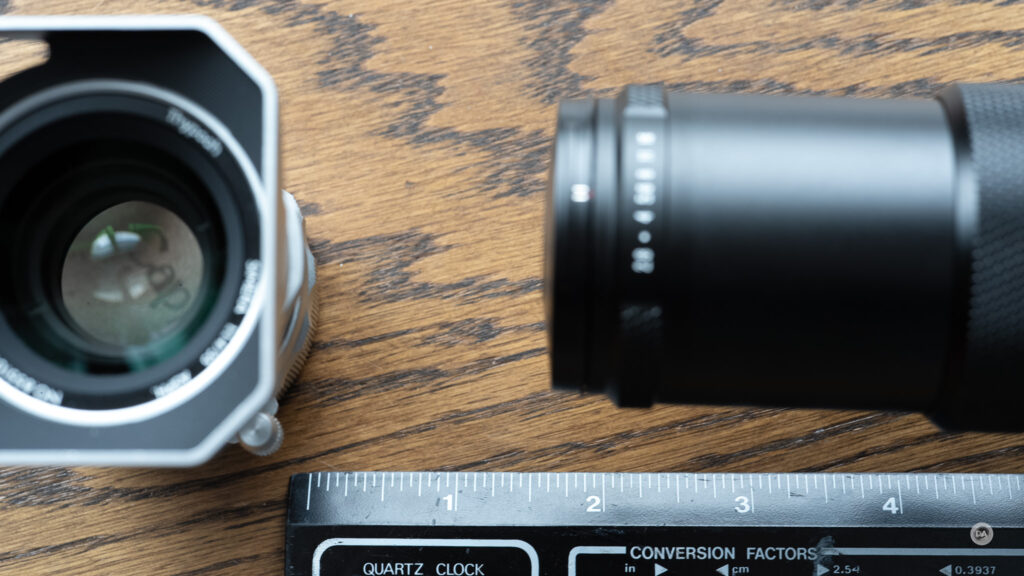

…and here’s the image I got at that distance:

That 5x level of magnification is so high that you basically lose context on what the subject actually is in many situations. Here’s a case in point. I was reviewing a beautifully crafted new lens recently that has a cool infinity lock feature on the focus ring. Here’s a look at it in a slightly wider context:
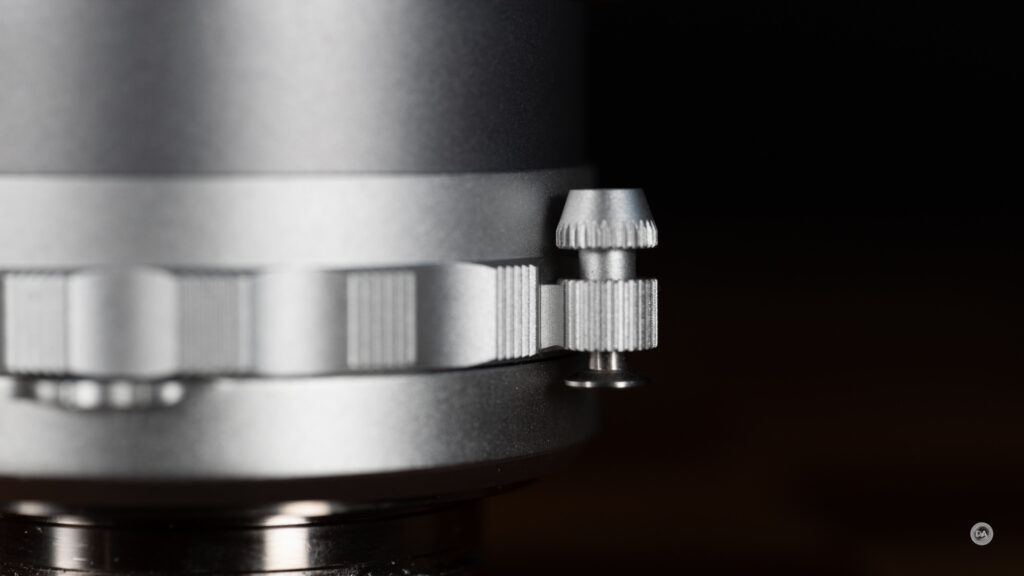
At 2x macro levels, the AstrHori delivers a cool image that shows off the fine details of the infinity lock, but you can still figure out what it is should you be familiar with this feature.
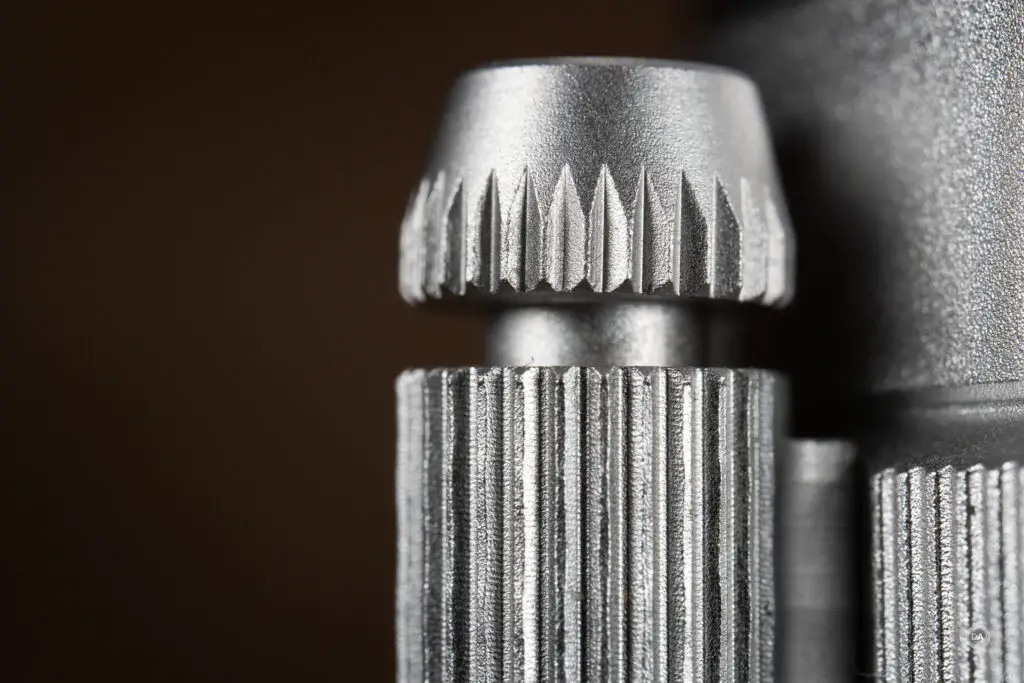
At 5x, however, you are seeing the grain of the metal and might not be able to guess what it is that you’re looking at.
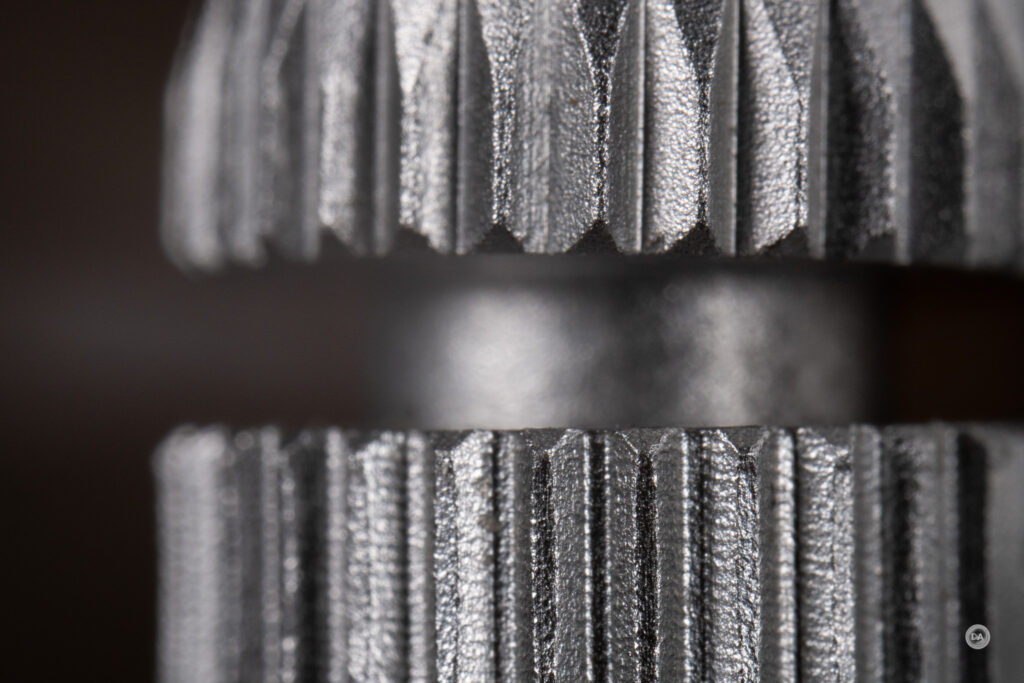
There are no filter threads or lights up front. It’s a plain façade with a relatively small opening for the front element. There is a metal lens cap included that slips over the front, but no lens hood included.

The build quality in general is fine for this price point, but that focus creep issue could definitely be a deal breaker, in my mind.
Extreme Macro Pointers
A few random thoughts/pointers about using a lens like this. As noted earlier, a lens like this necessitates using a steady tripod and often a timer to reduce vibrations. Everything is so magnified that the slightest bit of movement is going to cause motion blur in your images. I was often working at very slow shutter speeds in order to keep my ISO down and get cleaner images.
Depth of field is extremely small at these magnification levels, and there is going to be tension between wanting more depth of field and the reality that stopping the lens down past F5.6 or so will start to soften the image due to diffraction. How fine is that depth of field? Here’s the edge of knife…at F8!
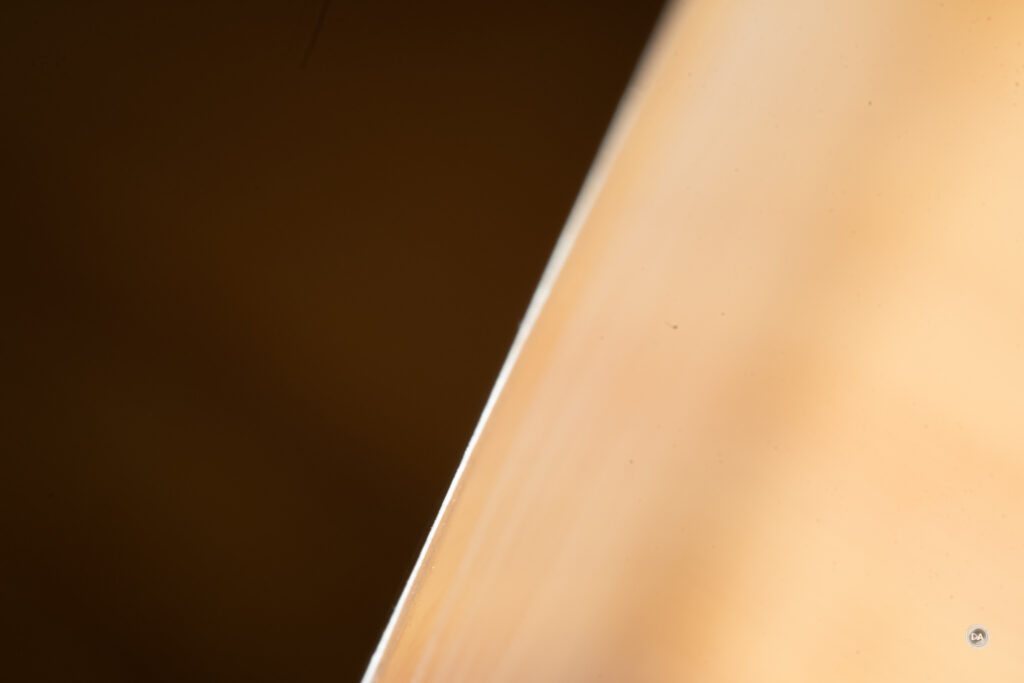
Here’s my fingernail at F5.6:
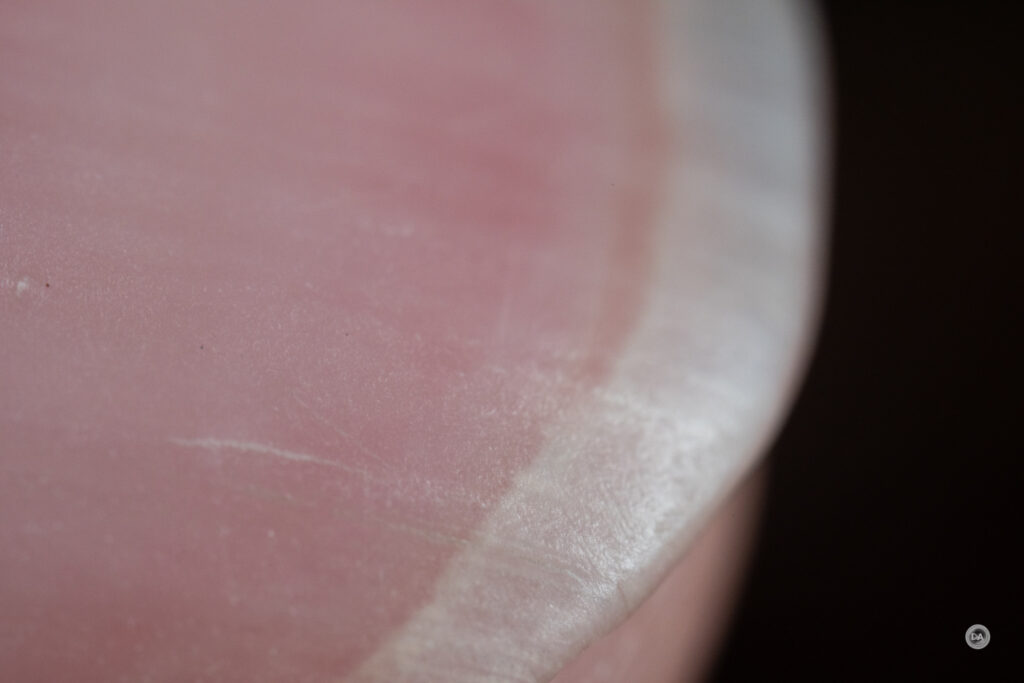
Getting enough depth of field to have much of anything in focus (if you are working with a 3-dimensional subject) will probably require doing focus stacking (combining multiple shots), and you might want something like macro focus rails (here’s an inexpensive one) to allow you to move the camera by small degrees.
For example, I took a series of photos of an American nickel, or five cent piece. At 5x Macro the depth of field is so small at F5.6 (my chosen aperture) that it took 5 photos to get all of the word “five” in focus. Each of them has a bit of the word in focus. I took those five images into Photoshop and combined them into a single image. Here’s a good article on how to do this if you’re unfamiliar with the process. The finished image looks pretty cool.
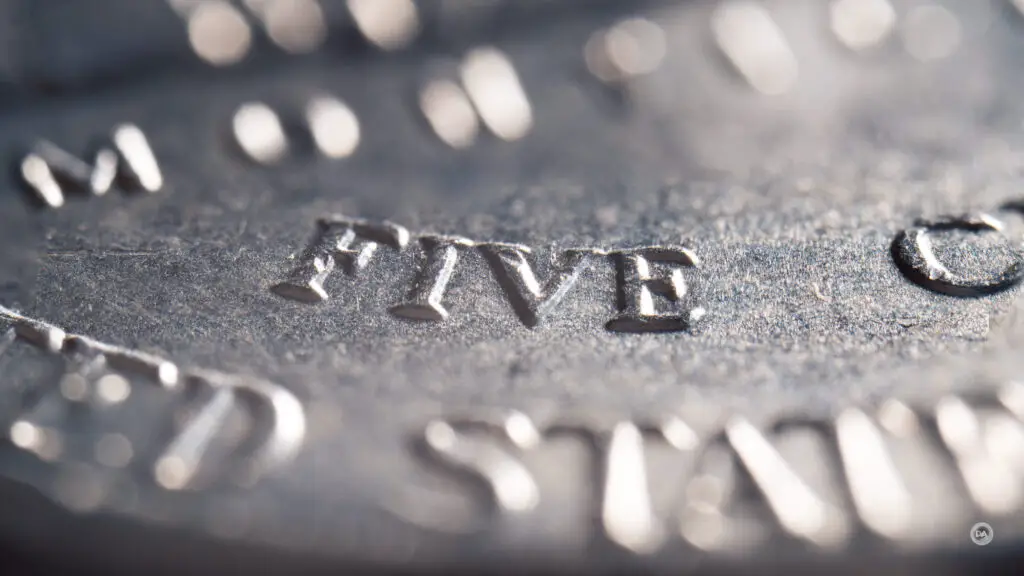
Obviously doing this will take additional time both in the capture and editing process, but this is the kind of lens designed for someone who is okay with being deliberate in their imaging process.
A secondary consideration is going to be in getting the lens into the correct position to capture your images. The fact that focus is fixed and that you need to be very close to your subject means that you might need a tripod with a lateral extension to allow you to move your camera forwards and backwards. Here’s a relatively inexpensive example of a tripod that does this.
Finally, be patient. Getting good at this type of photography requires practice and learning effective workflows and technique.
Image Quality Breakdown
Evaluating the optics of a lens like this requires stepping outside my normal testing procedures, so my process will be slightly different. The AstrHori 25mm F2.8 2-5x Macro has an optical formula of ten elements in 7 groups.
In my tests I saw very little vignette, so that seems to be a non-issue. I can’t use my typical test chart for vignette and distortion, but this shot from a two-dollar bill shows no evidence of distortion in the lines.
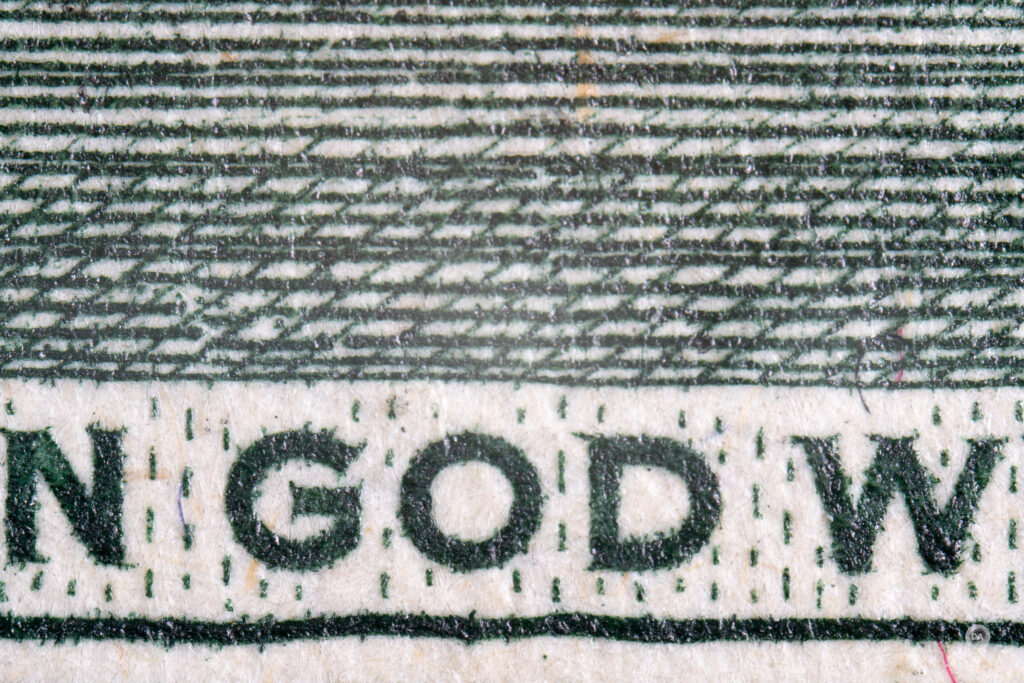
To give you some context, here’s the bill that this image was taken from; the shot above is uncropped, by the way!

Take a look at the faces of the group in the center of the bill for context for the next two examples. If I use this bill as a subject for the AstrHori 2-5x Macro I get this result at 2x Macro (minimum magnification):

At 5x Magnification, only one of those faces will fit in the frame:

That’s a LOT of magnification.
It is of paramount importance that a lens like this controls longitudinal chromatic aberrations well, as you will often need to flood your subject with light, and shiny surfaces create a lot of opportunity for color fringing. This is fortunately an area where the AstrHori 2-5x Macro excels, and I saw next to no color fringing in any of my images…even shooting the edge of coin with many layers of defocus.
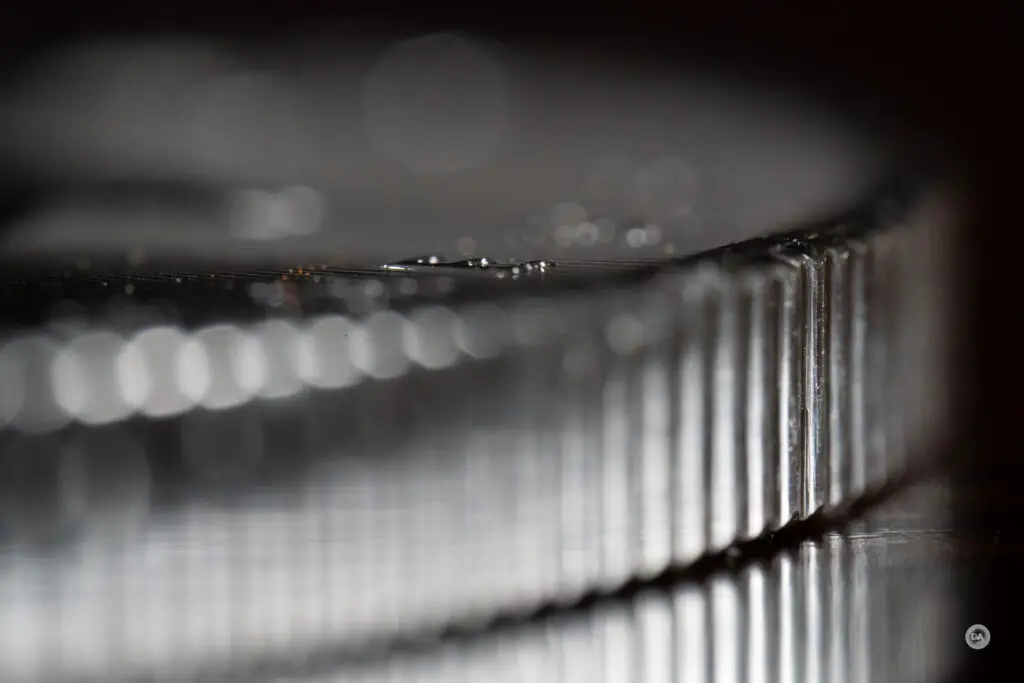
Here’s a series from F2.8 to F16 that shows good fringing control even at F2.8 and also how depth of field increases as you stop the lens down.

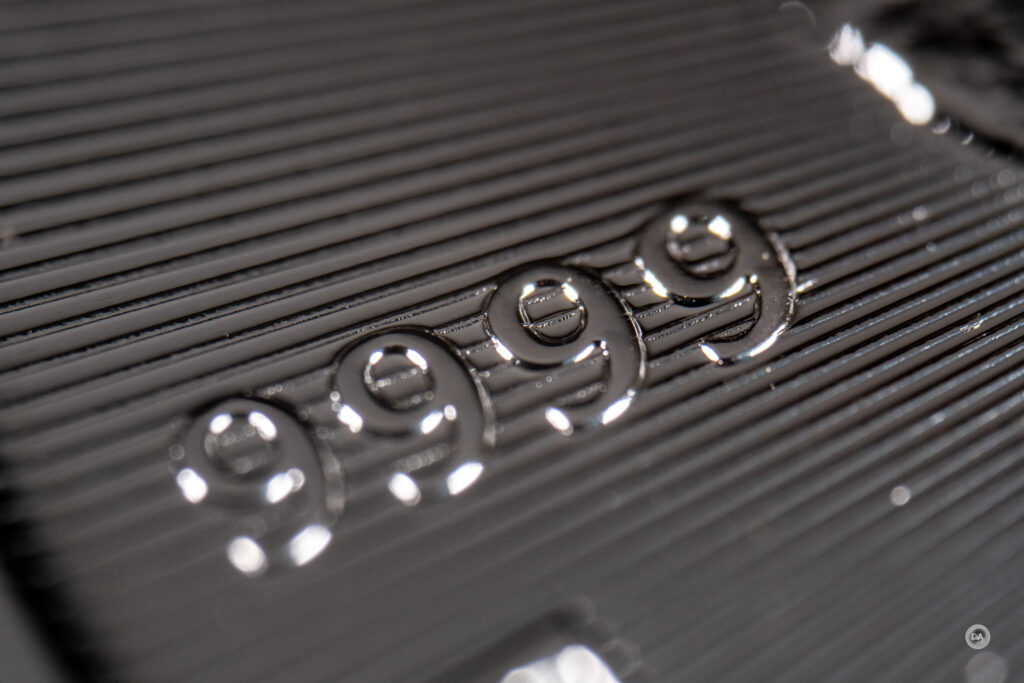
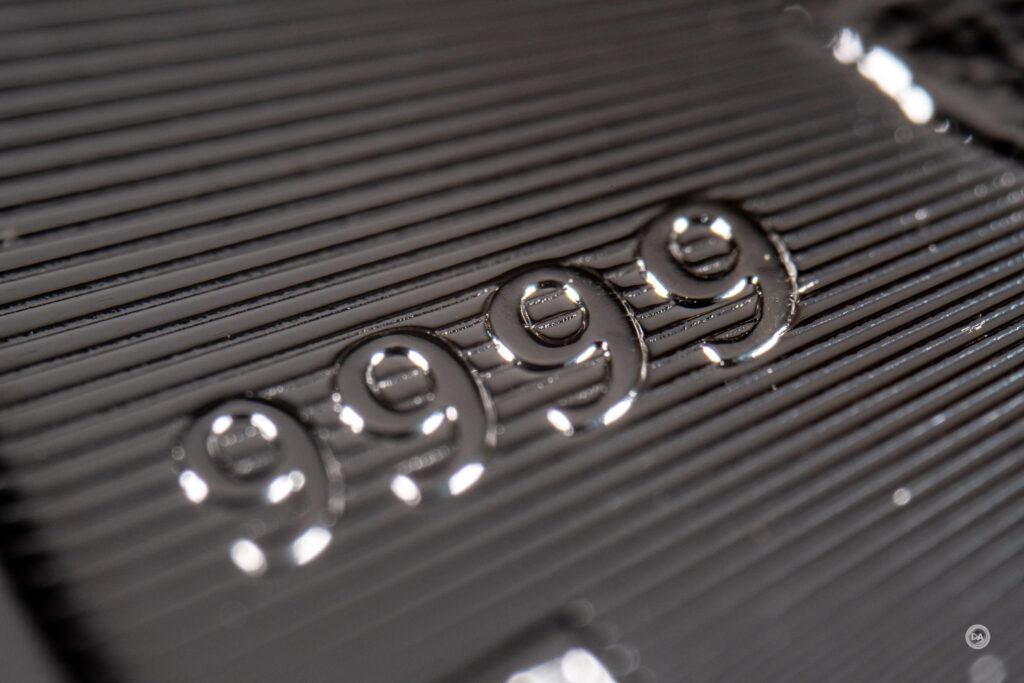
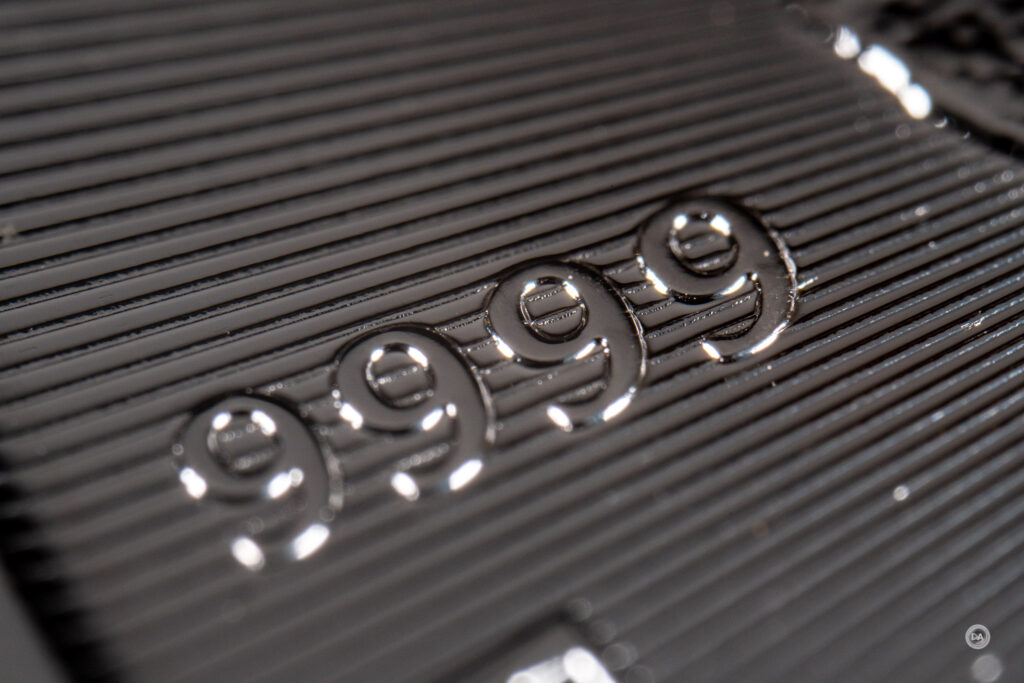

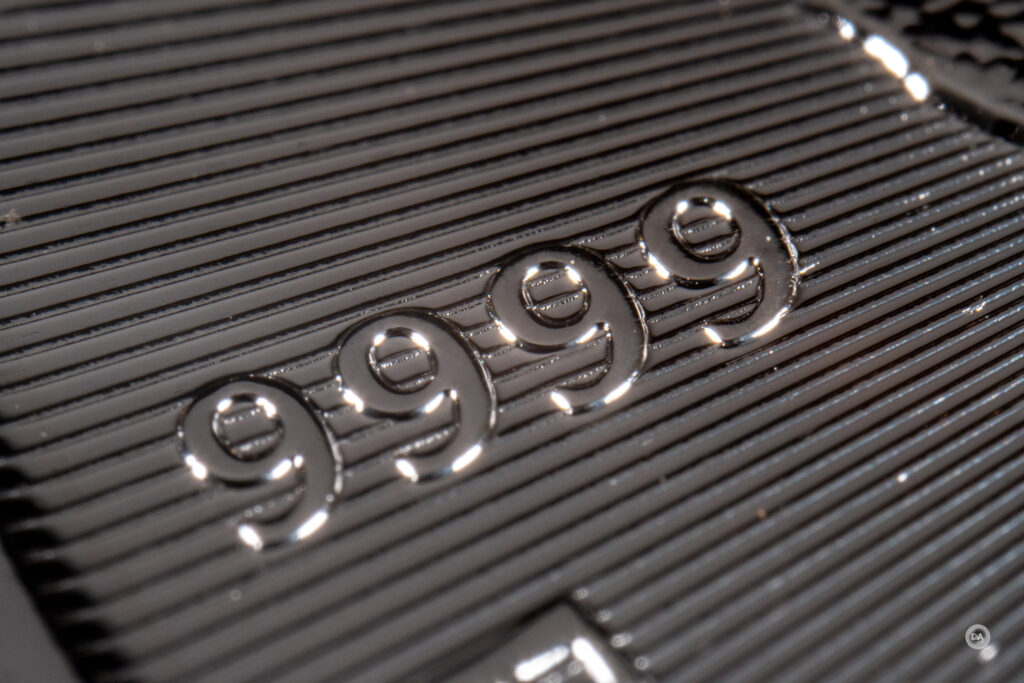
Diffraction hits harder after F8, so F8 (#4 in the series) may be the best compromise for maximizing depth of field while maintaining peak image quality.
So how about image quality? Here’s a look at my test chart I use for my reviews.
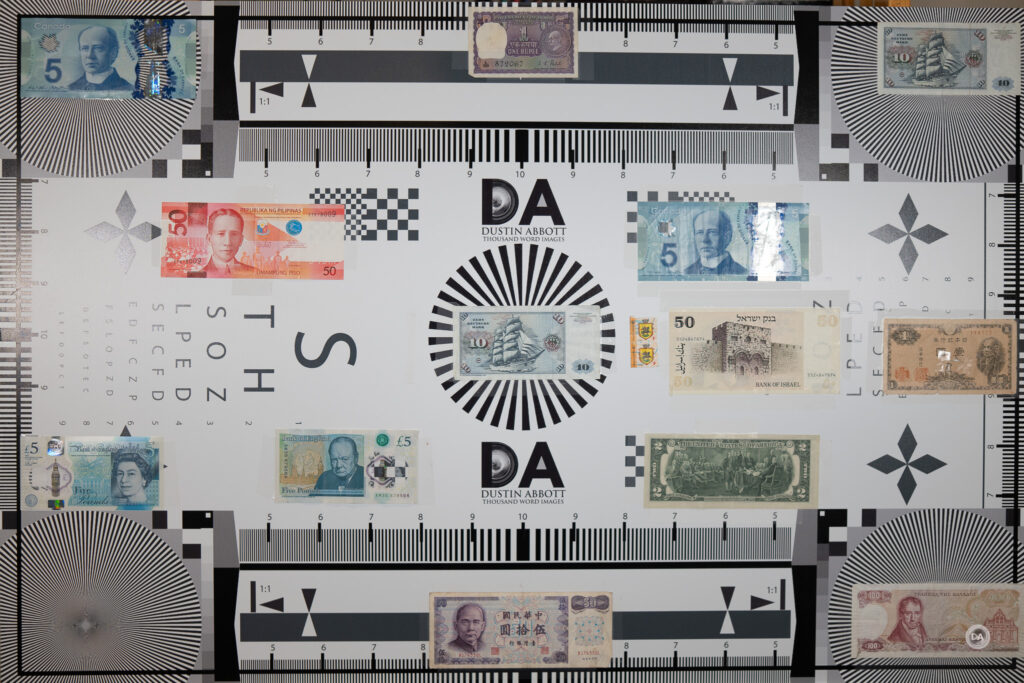
In the center of the chart is a old German 10 Deutschmark bill. On the upper right part of that bill is some writing. This series of shots is uncropped images of that writing at apertures from F2.8 – F16 (six stops).

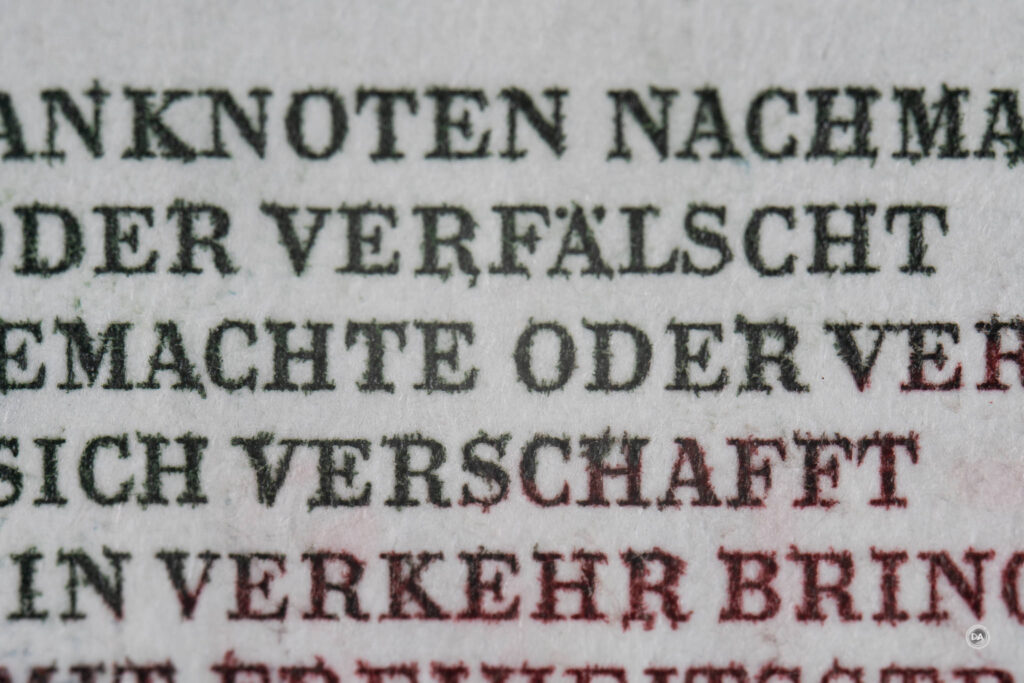
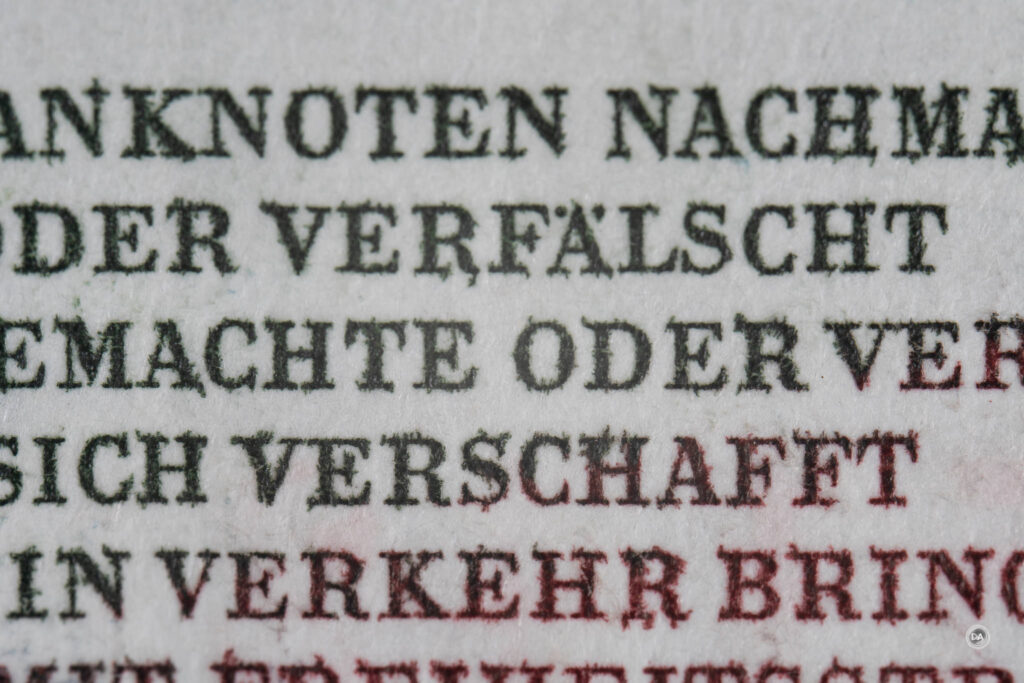
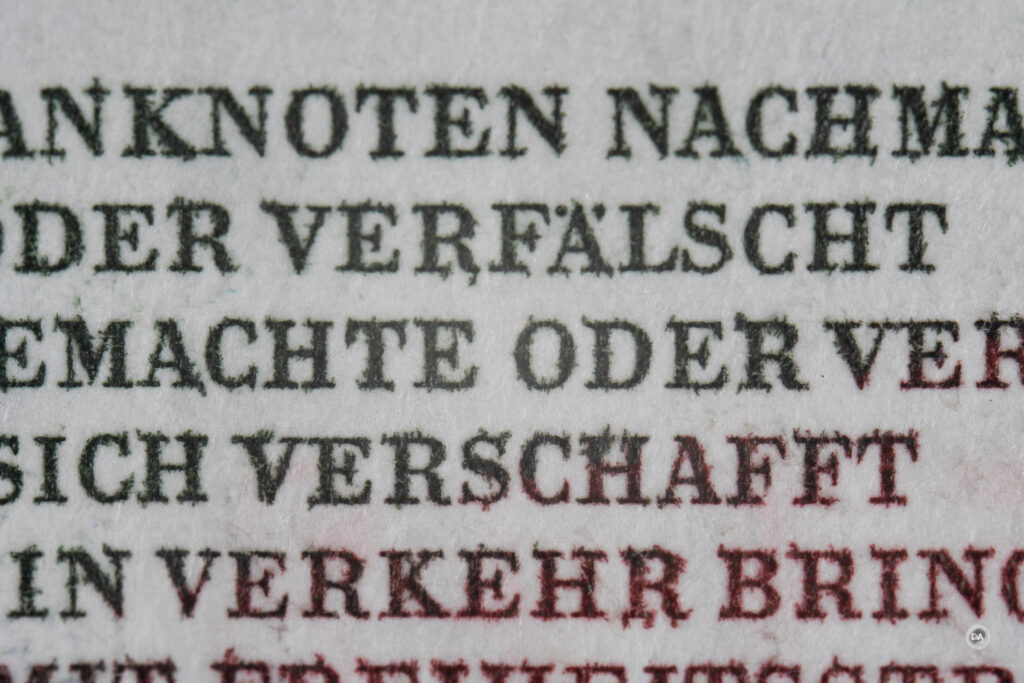
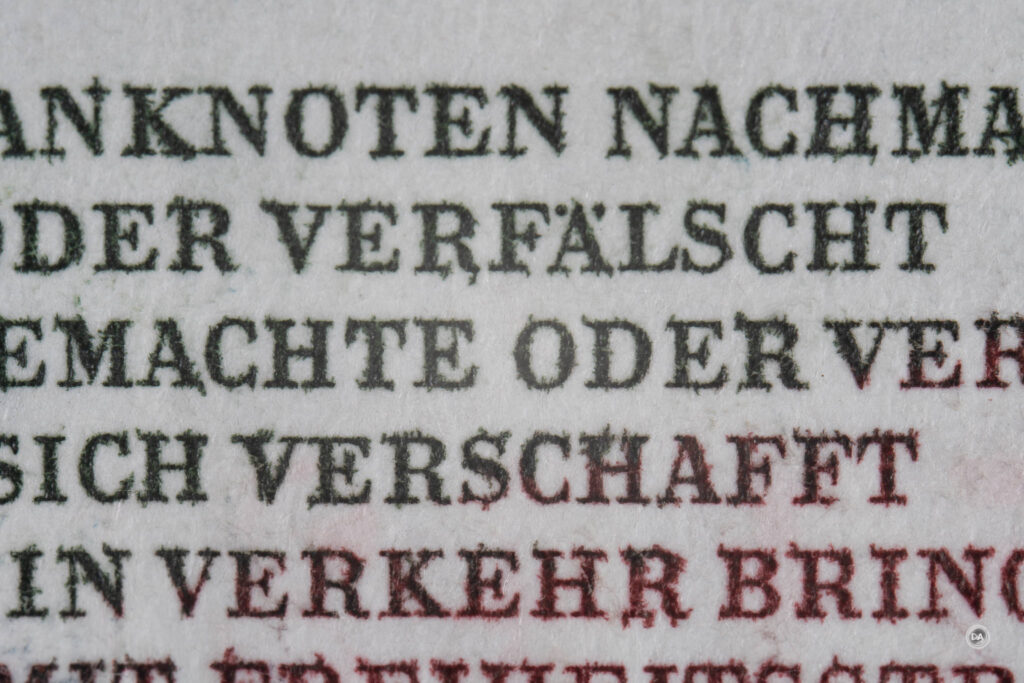
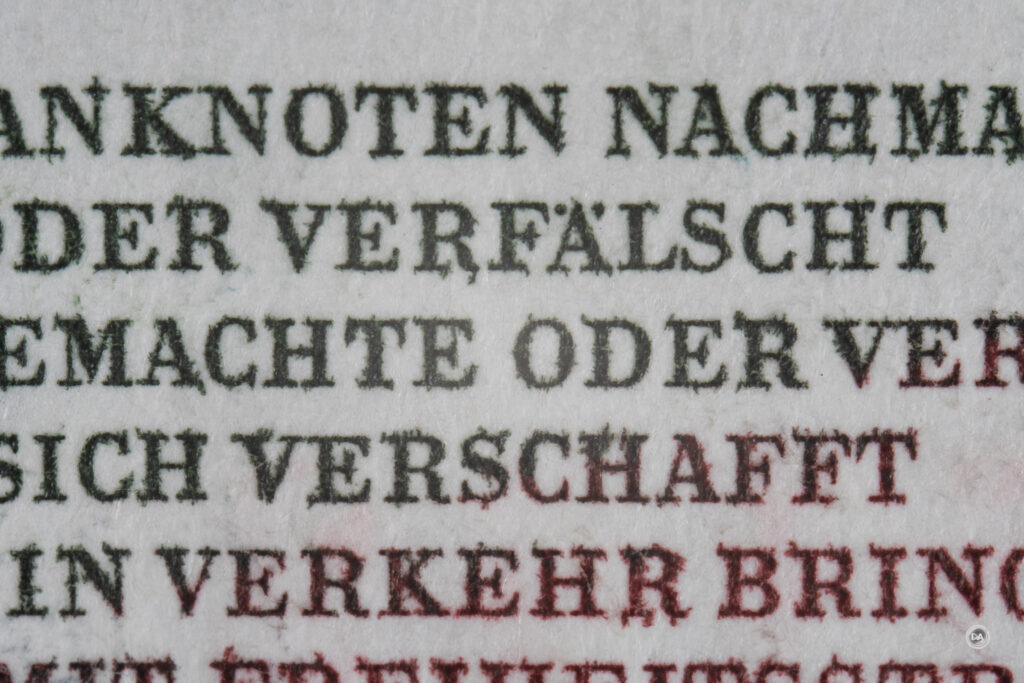
Looking at a pixel level mostly shows me that diffraction will start to affect contrast fairly early on my high resolution camera (61MP Sony a7RV). My F2.8 results (at 5x Macro) are slightly higher contrast than even my F5.6 results.
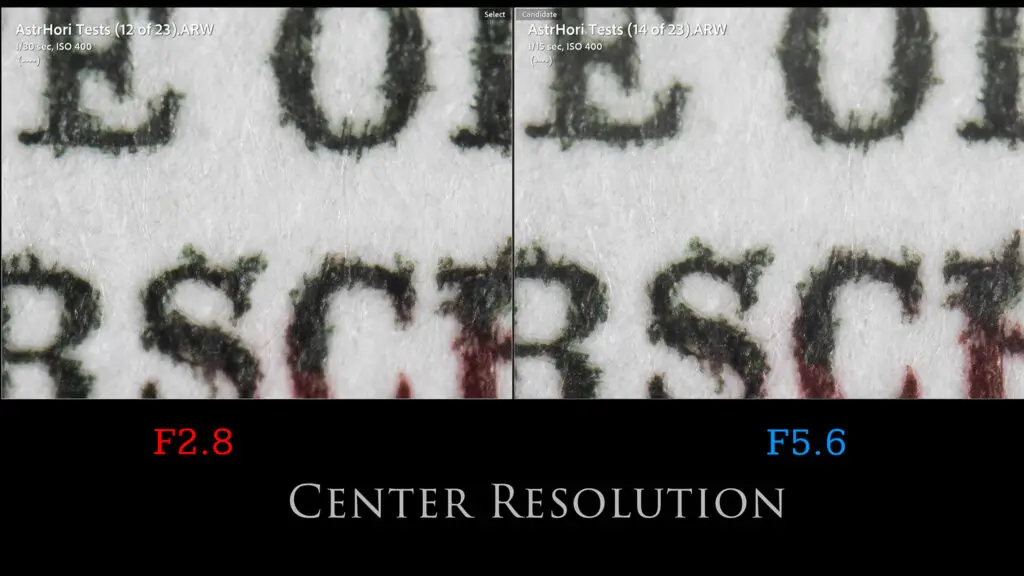
I also noticed something interesting while working on these tests. My wide open (F2.8) exposure was 1/30th of a second. There are five stops between F2.8 and F16, meaning that my exposure at F16 should be 1 second. The camera metered (correctly, at least for exposure) at 1/4th second. If I manually exposed at 1 second at F16, I got a very overexposed result:
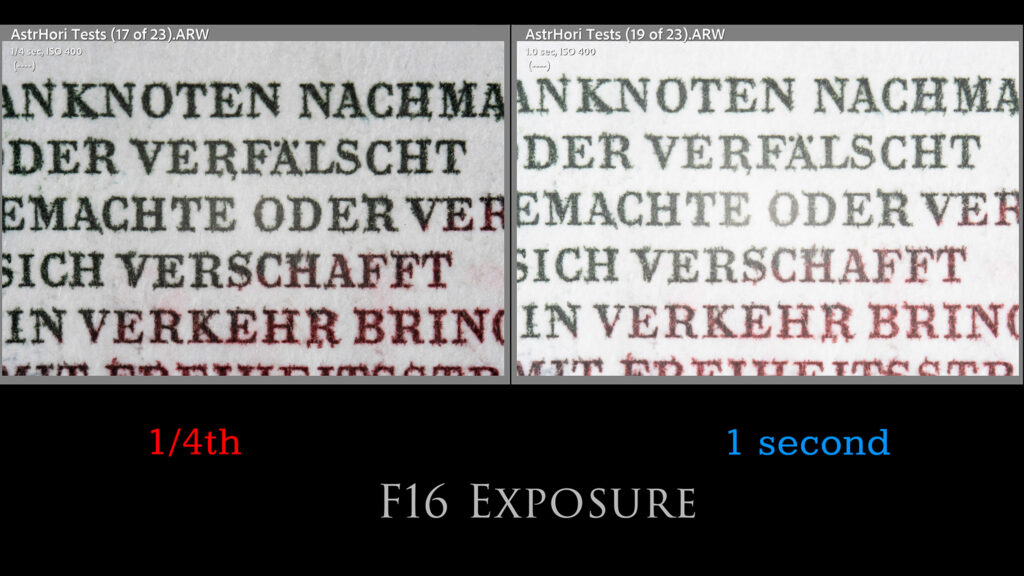
That’s a 2 stop exposure difference, which makes me wonder if the aperture range is a full F2.8-F16. Probably not a big deal, but I do like to report what I find.
The bokeh quality is pretty good from the lens. You will get larger, softer specular highlights when shooting at F2.8, and when stopping down you won’t get a fully circular shape to the bokeh highlights due to the straight aperture blades. Here’s a comparison to illustrate what I mean:

You’ll be able to create bokeh on just about anything three dimensional because the depth of field is so small. In this shot of a needle and thread just the slight curvature of the spool of thread is enough to throw it completely out of focus.

You will find with some images that the higher levels of magnification are just too much to even be able to readily identify your subject. This is folds in the steel of a fancy knife at 5x Macro:
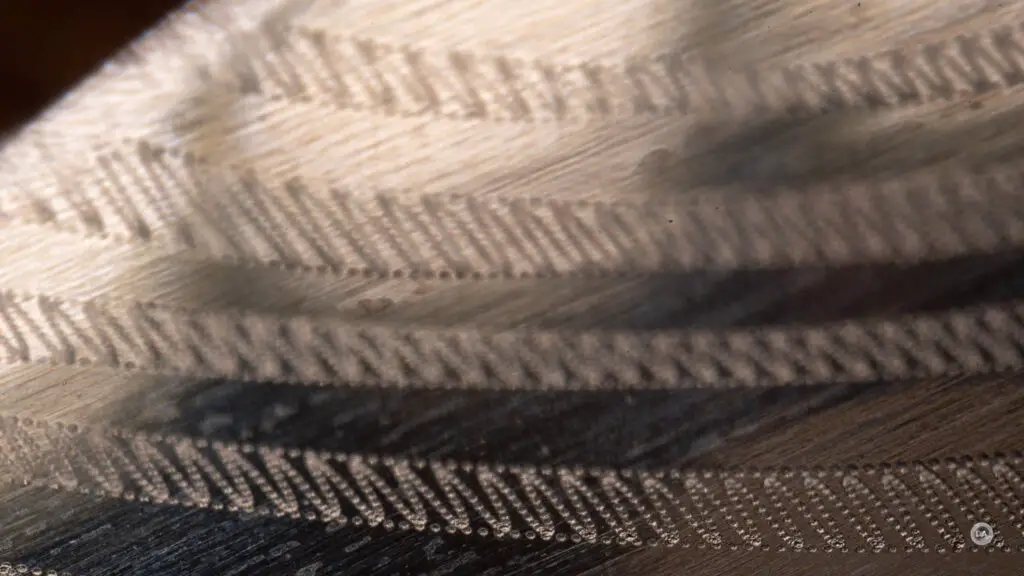
I strongly prefer the less magnified shot of the blade, as it gives you more context.
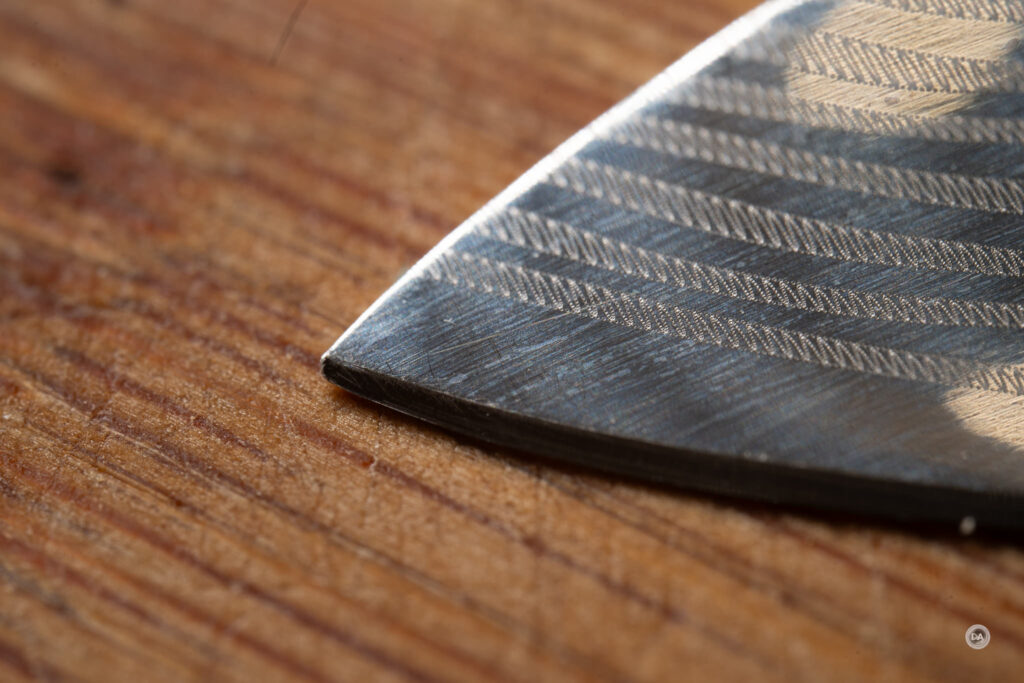
This could vary from subject to subject, however.
The bottom line is that the AstrHori doesn’t have any optical fatal flaws. It isn’t the sharpest macro lens that I’ve used, but there’s sufficient sharpness and contrast to give you crisp looking results.
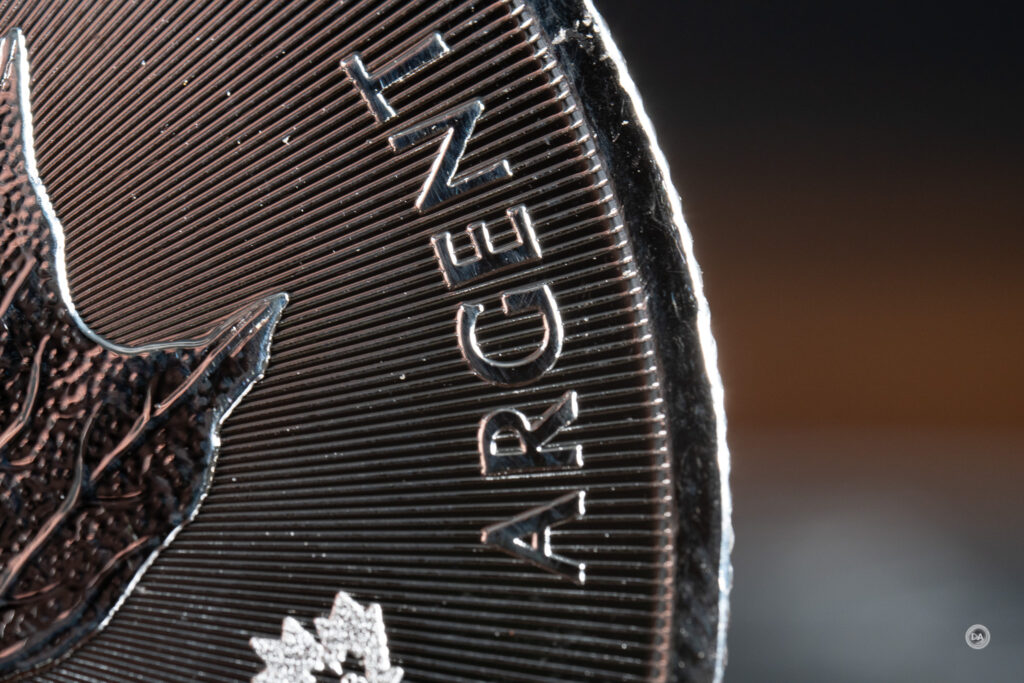
The relatively low cost of entry makes me feel that the AstrHori 25mm F2.8 2-5x Macro is giving good value for money optically. Feel free to check out the lens image gallery to see even more sample images.
Conclusion
The AstrHori 25mm F2.8-5x joins a very short list of lenses that can deliver a magnification level of 5x macro. At $249 USD, it is cheaper than either the Laowa 25mm F2.8 2.5-5x ($399) or the Canon MP-E 65mm F2.8 1-5x Macro ($1049). I haven’t used either of those lenses, but from reviews that I have read, they are equally difficult to use…it’s the nature of the beast. AstrHori seems to be well positioned versus the Laowa lens as it is significantly cheaper and has a slightly bigger magnification range (2-5x vs 2.5-5x).
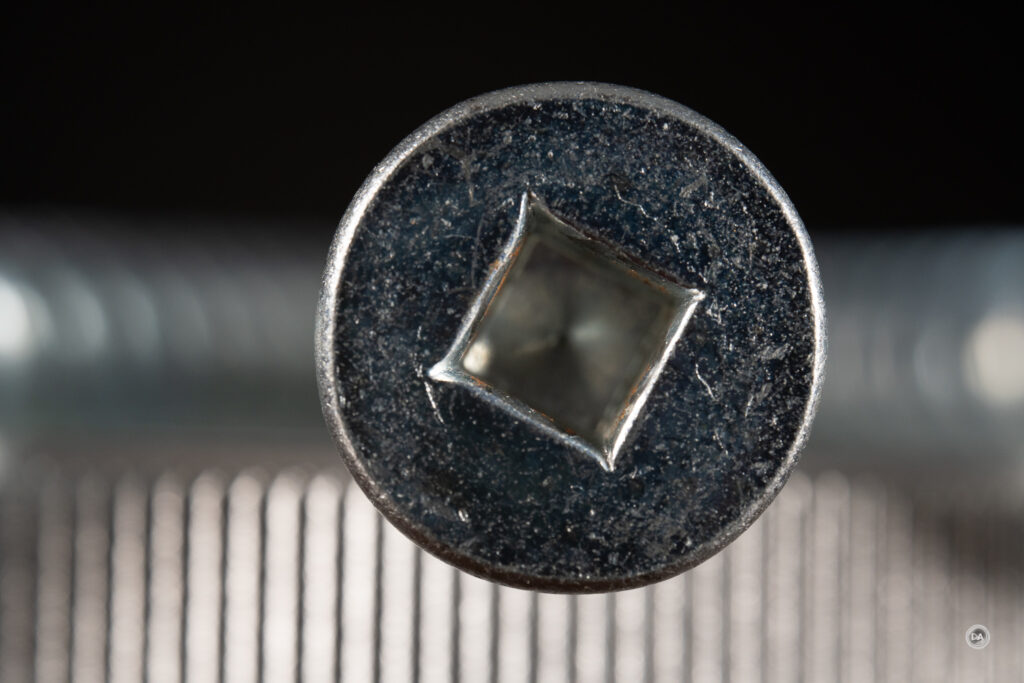
Ultra Macro photography is a very unique, niche type of photography that will seem a little inaccessible to the inexperienced. It takes some practice and some patience, but there’s no question that you can create some unique images that open up a whole new perspective on the world. You’ll want unmoving subjects and an unmoving camera, but if you can line up those two things, you’ll get a lot of bang for your buck from the AstrHori 25mm F2.8 2-5x Macro. The low cost of entry is a huge plus here, as it means that you can experiment with a very different kind of photography without breaking the bank. It’s currently the dead of winter here in Ontario, Canada, which is the perfect season for this kind of lens. You can explore whole new worlds indoors with an ultra-macro lens…so get snapping!
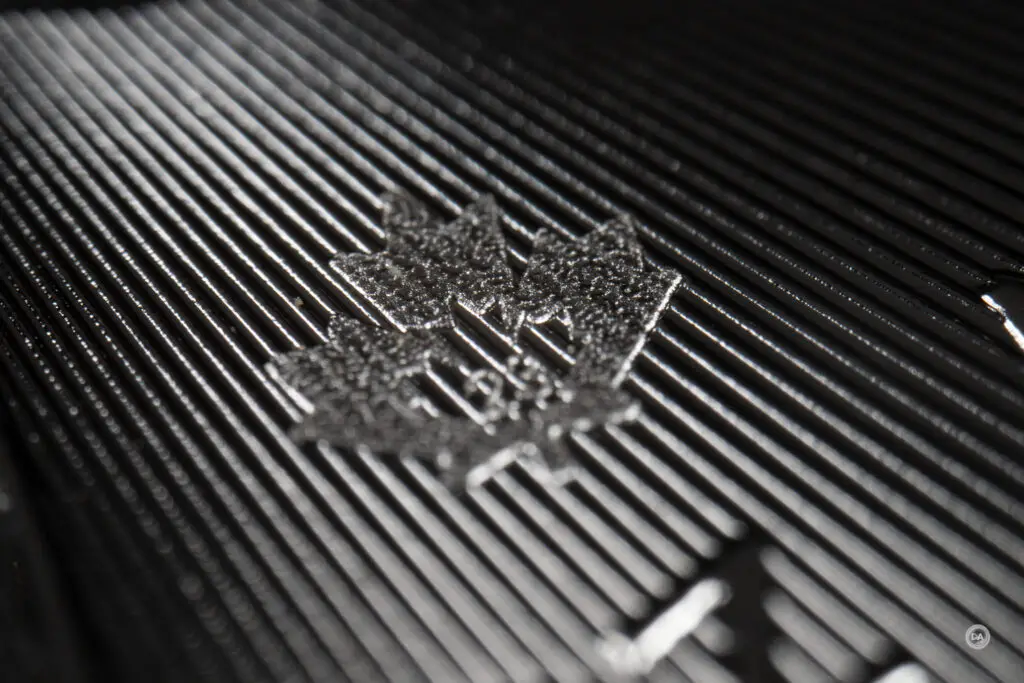
Pros:
- Incredibly high levels of magnification
- Low price tag
- Good control of aberrations
- Low vignette and distortion
- Nice build quality
- Fairly good macro resolution
Cons:
- Aperture quirks
- Fixed focus makes for extra challenges
_________________________________________________________________________
GEAR USED:
Purchase the AstrHori 25mm F2.8 2-5x Macro @ AstrHori Store (worldwide shipping) | B&H Photo | Amazon | Amazon Canada | Amazon UK | Amazon Germany
___________________________________________________________________
Purchase the Sony a7RV @ B&H Photo | Adorama | Amazon | Camera Canada | Sony Canada | Amazon Canada | Amazon UK | Amazon Germany
__________________________________________________________________
Purchase the Sony a7IV @ B&H Photo | Adorama | Amazon | Camera Canada | Sony Canada | Amazon Canada | Amazon UK | Amazon Germany
_________________________________________________________________
Purchase the Sony Alpha 1 @ Camera Canada | B&H Photo | Adorama | Amazon | Sony Canada | Amazon Canada | Amazon UK | Amazon Germany | Ebay
_________________________________________________________________
Want to support this channel? Use these affiliate links to shop at: B&H Photo | Amazon | Adorama | Camera Canada | Amazon Canada | Amazon UK | Ebay | Make a donation via Paypal
Buy DA Merchandise https://bit.ly/TWIMerch
Keywords: AstrHori, 25mm, F2.8, 2-5x, 2:1, 5:1, Macro, Ultra Macro Full Frame, Review, Sony Alpha 1, Sony a7RV, Review, Hands On, Dustin Abbott, Real World, Comparison, Sharpness, Bokeh, Flare Resistance, Autofocus, Image Quality, Sample Images, Video, Photography, let the light in, weathersealing, #letthelightin, DA
DISCLAIMER: This article and description contains affiliate links, which means that if you click on one of the product links, I’ll receive a small commission. As an Amazon Associate I earn from qualifying purchases.










 Viltrox Pro AF 85mm F1.4 FE Gallery
Viltrox Pro AF 85mm F1.4 FE Gallery  Viltrox AF 85mm F1.4 PRO FE Review
Viltrox AF 85mm F1.4 PRO FE Review  Yongnuo YN 35mm F1.8 ART Gallery
Yongnuo YN 35mm F1.8 ART Gallery  Yongnuo YN 35mm F1.8 DA ART Review
Yongnuo YN 35mm F1.8 DA ART Review 



One thought on “AstrHori 25mm F2.8 2-5x Macro Review”